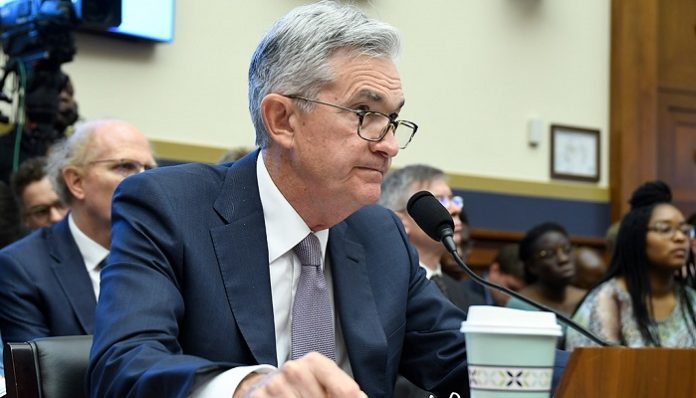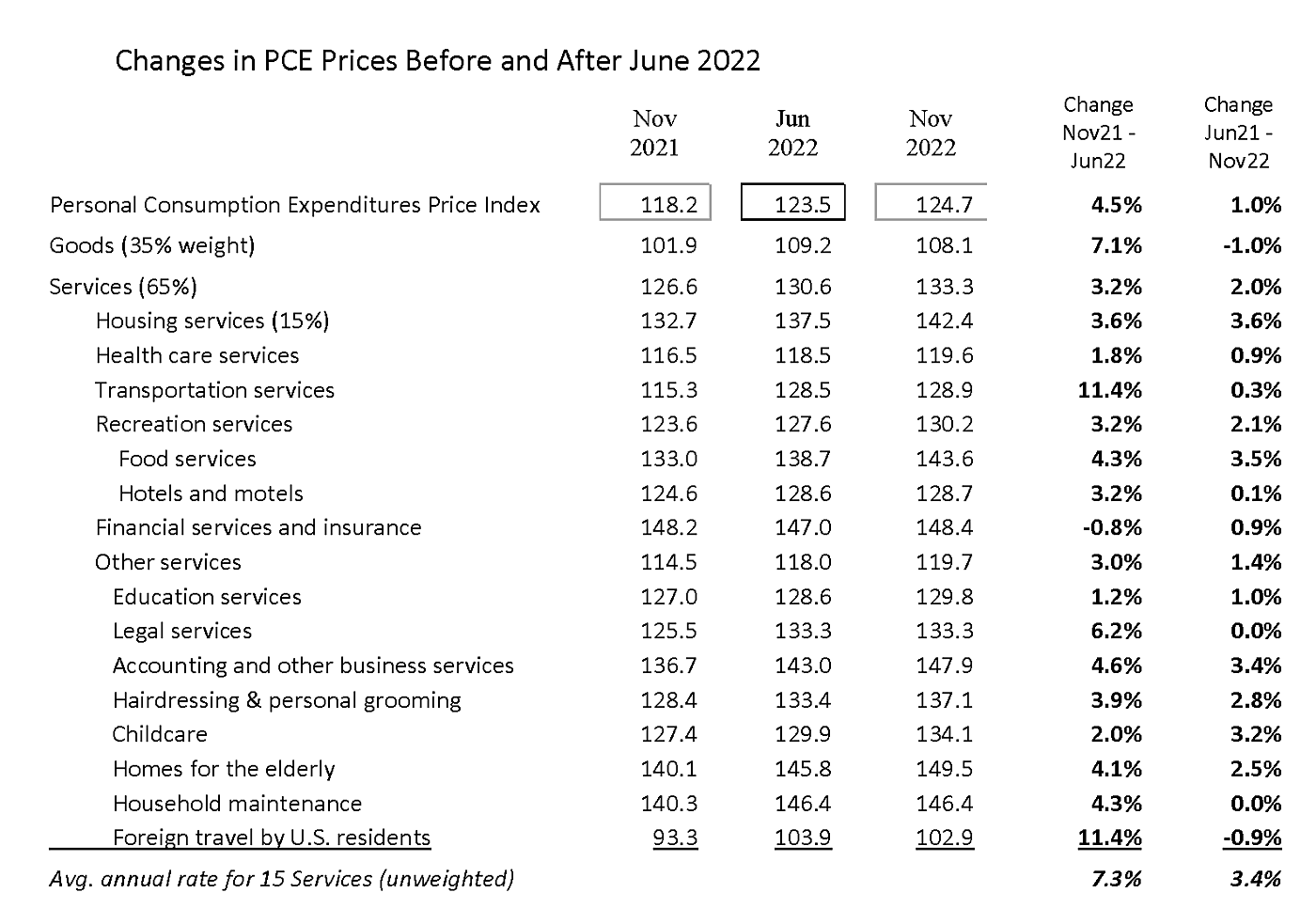Fed Chair Powell’s story about Service Price Inflation remaining high is untrue, in theory and in fact.
“In recent remarks, Fed Chairman Jerome Powell has emphasized that, even in recent months, there has been only a modest slowdown in price increases for core services outside of housing. That is an area of the economy seen as most sensitive to labor costs, which have shown few signs of decelerating.”
Although Mr. Powell’s latest story may seem a useful pretext for ignoring increasingly obvious signs of slowing inflation since June (or for raising Fed interest rates relentlessly), it suffers the unfortunate defect of being entirely false.
My Table shows the Personal Consumption Expenditures (PCE) price index numbers for the entire index, for goods and services separately, and for 15 representative categories of services aside from housing (which is shown but excluded from average inflation rates in the last row). A rough unweighted average of the average annual inflation rate among those 16 “core services less housing” was 7.3 percent before June but 3.4 percent since. Few would call that a “modest slowdown.”
The last two columns compare the total percentage change (not the monthly or annual change) from November 2021 to June 2022 with the changes from June 2022 to November 2022. All of Chair Powell’s statistics, by contrast, only compare changes from November 2021 to November 2022—the ritualistic “year‐to‐year percentage change” which masks dramatic changes in inflation before and after last June.
“It will take substantially more evidence to give comfort that inflation is declining,” said the Chairman. But his favored year‐to‐year changes are painfully slow to reveal changing trends because each new month adds just 1/12th to an average that still carries a lot of obsolete old baggage.
To split the Chairman’s 12-month changes into two very different periods, the column before June includes seven months while June to November is five. But this is a trivial difference which cannot begin to explain why PCE prices rose 4.5% before June but only 1 percent since. Since June, health care prices rose 0.9 percent over five months (or 0.18 percent a month). Education rose by 1 percent. Transportation services rose 0.3 percent, Hotels 0.1 percent. Prices of legal services were unchanged as were prices of household maintenance, while foreign travel costs fell ‑0.9 percent.
The Chairman’s stereotype of such different services being extremely labor‐intensive with prices passively tied to wages is weak in theory and fact. Competitive service firms cannot just raise prices at whim without losing too many customers. They move prices up or down (e.g., by advertising special sales and coupon discounts) depending on changes in market demand, not on changes in variable costs such as wages.
Inflation peaked in June and slowed dramatically then. Fed Chairman Powell has conceded to critics that housing inflation has been exaggerated and will be coming down this year, and that flat or falling prices of goods will continue. Energy prices are quite likely to subtract from his favored year‐to‐year measures of inflation because Russia’s invasion of Ukraine pushed them much higher than they are likely to be this spring and summer. So, that leaves only services less housing to worry about, in theory, if they showed any sign of being tied to wages and if nonfarm labor costs had not slowed as much as they have this year.
As it turns out, most service prices also peaked in June and have also slowed dramatically with only minor exceptions. Fed loyalty to Phillips Curve Theory (that job loss lowers wage‐push inflation) is famous.
But the first step toward a softish landing is to get the facts right.
Originally published by the Cato Institute. Republished with permission under a Creative Commons Attribution-NonCommercial-ShareAlike 4.0 International License.
For more Budget & Tax News.












